Knowing Keyword Research is Great!
Knowing Your Customers’ Needs is Great!
But understanding the customer’s intention (User Intent Guide) is the most important thing.
Once upon a time, all search engines were machines (robots) that were completely based on algorithms.
But now, there is only one search engine Google which has come out to be the best of all search engines.
How?
Because Google is completely focused on the best results that satisfy the user intent like which information a user actually wants while conducting the search.
Do you know what your potential customers are searching for or what they want to see on your website?
Let’s assume you are ranking in Google for some keywords that were researched on the basis of volume and competition but you are not providing value or the main information for what the users are actually looking for in your website content.
If this is the condition then your efforts are all in vain. Do not believe me? Here, I’ve discussed many examples related to such cases because examples and case studies are great ways to guide anyone.
A lot of you probably wonder what the user intent is, and some of you may be familiar with the ‘user intent’ but not in the right way.
So I’m here to guide you with the proper meaning of ‘user intent’ with some examples and case studies.
I assure you that you’ll learn something new and different today after reading this whole guide.
Some of you may have already read blogs about user intent before, but in this blog, you’ll find and learn something new that is not available anywhere else on the entire world wide web.
Let’s begin with this user intent guide.
So, What is User Intent?
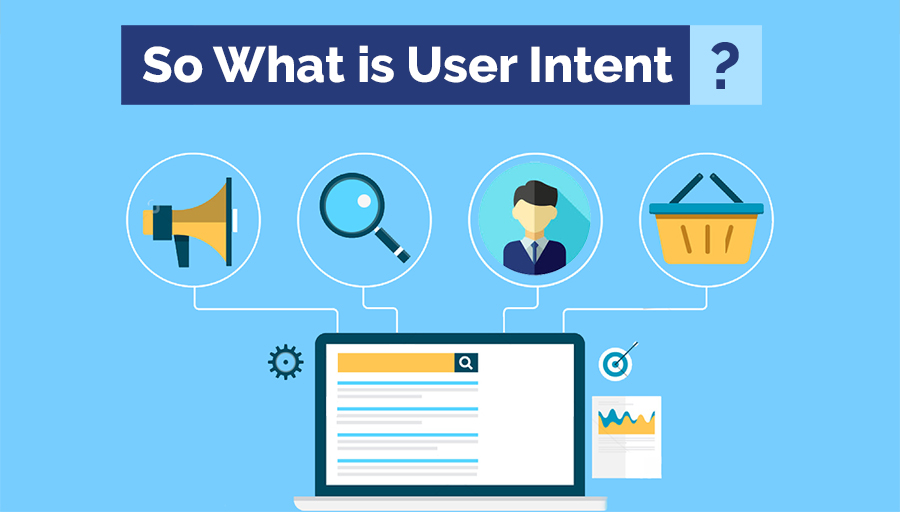
‘User intent Guide’ refers to what users are actually trying to find when they perform a search query.
Or as Neil Patel says, ‘“user intent” is the goal someone has in mind when typing a query into Google.’
Whenever a user conducts a search query, there is a certain intention behind the search they may want to grab knowledge, or maybe look to buy something or for some information from trusted sources.
Let’s understand this with an example
Suppose, you are looking for information about ‘business ethics’ so you can conduct a search for the term “what is business ethics” or you can search “business ethics means”.
Now, both search queries have the same meaning but the phrases are different. Google is a smart search engine so it understands the user intention behind a search.
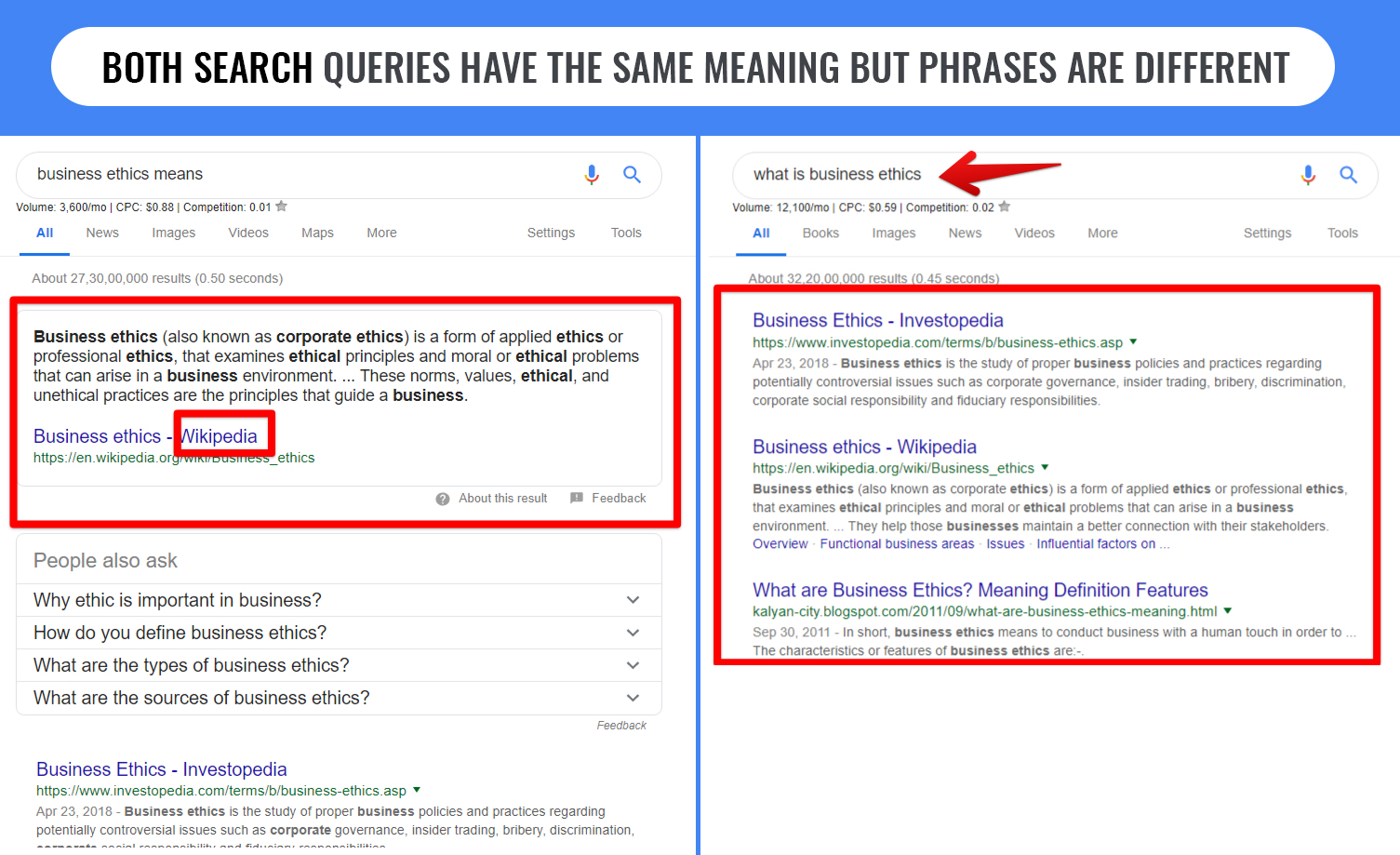
In the above image, you can see that Google is showing the same results for both queries.
Why?
Because Google knows that the user intends to find information and so it shows the Wikipedia results first because Google prefers Wikipedia as the trusted source for all kinds of information.
The Different Types of User Intent

Well, there are mainly three types of user intent:
- Informational Search Queries
- Navigational Search Queries
- Transactional Search Queries
Informational Search Queries (Know):
In informational queries, the user is looking to find some information through their search. It means the user is trying to know or gather some information about a topic from the web.
This is also known as the “know query”, and they are connected to the transactional & navigational queries in a way.
How you ask?
Suppose you want to buy the MI Note 5 Pro. So, you will most likely follow the below steps in order to buy this phone.
Step 1: First, you will search for queries like mi Note 5 pro specifications, features price, etc, because you want complete information about the phone to satisfy your mind before you actually purchase it. This is an informational query.
Step 2: Once you know everything you should know about the phone, you will compare this phone with other MI phones for the best offer at the price.
You will search for queries like best MI phones, Best MI Phones Offers, etc. This is a navigational query because you are searching for a specific website/thing.
Step 3: Finally, when you have decided to buy the phone, you will conduct a search like “buy mi note 5 pros”, “buy mi note 5 pro 4GB, 6GB”, etc. This is a Transactional Query as you intend to perform a transaction.

Google understands the user intent very well, and this is how it is able to give the right results every time.
It also proves that in many cases Informational Queries are connected to navigational and transactional queries.
Navigational Queries (Go):
These queries are also known as entity or specified queries, where a user is looking & want a specific website, location, place to know, and do activities.
Same to informational queries, navigational queries also include words like ‘best’ or maybe the particular brand, specified website, and the specified location.
Confusing?
Let me help you understand with an example.
Let’s assume you want to buy Nike shoes, so what query will you perform in Google?
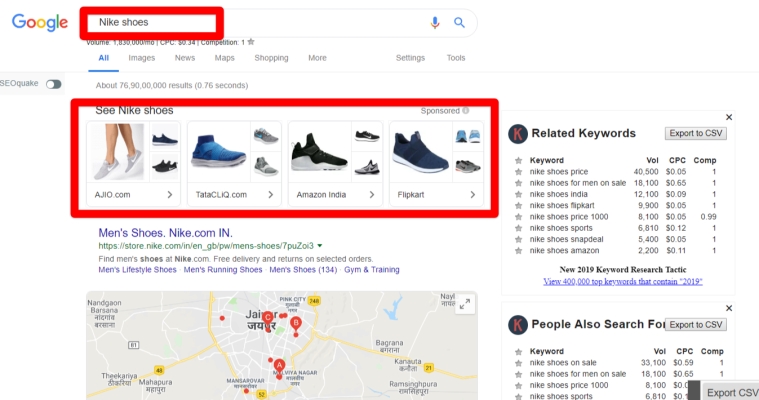
You’ll probably search like this “Nike shoes” “Best Nike Shoes” “Nike shoes underprice”.
Google has a clear idea that you are looking for specific brand shoes so it will show you all the results that include the Nike shoe product and information.
Suppose Google shows you Adidas or other brand shoes then your search intent is not satisfied because you want only Nike shoes and you are not interested to buy any other brand shoes.
This is how search queries work in this particular condition.
So I hope that now you understand “what is the navigational query”. If you have any doubts, please let us know in the comments.
Transactional Queries (Do):
In transactional queries, the user is ready to buy a specific product or book a specific service after he has already gained all the information related to the product or service.
E-commerce-related searches are the perfect example of these types of queries.
For example, you are planning to go on a trip to Goa and need to book a hotel. What query will you search on Google?
Very Simple!
You will search for queries like “Book hotels in Goa” “Book 5 stars hotels in Goa” “Book 3-star hotels in Goa”, etc.
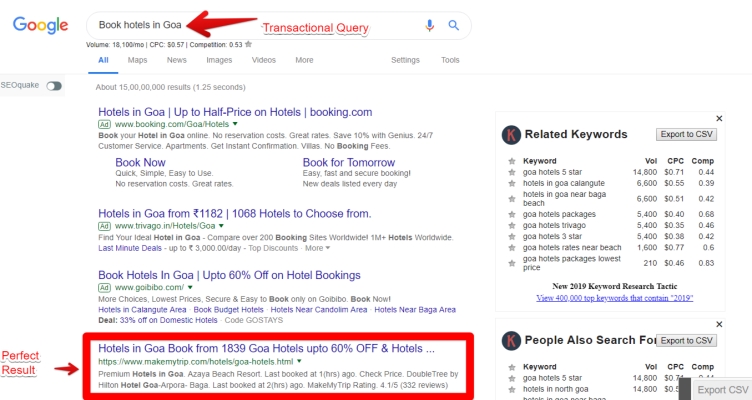
This is how you will conduct a transactional query.
The Science Behind the User Intent:

Well, there is a logical science behind the discovery of User Intent. There are two search goals described in the user intent:
The first is: When a user is looking for clear, general, and limited information about a topic.
And the Second is: When a user is looking to find some important information related or by using some generic keywords.
The users who are specific have always narrow search intent, they always search for limited information on the topic.
Whereas the users who are exhaustive always have a wider scope, they will always search, search, and search.
The various facts and science behind user intent were discovered by the University of Hong Kong in 2006.
The Unique Process Of User Intent
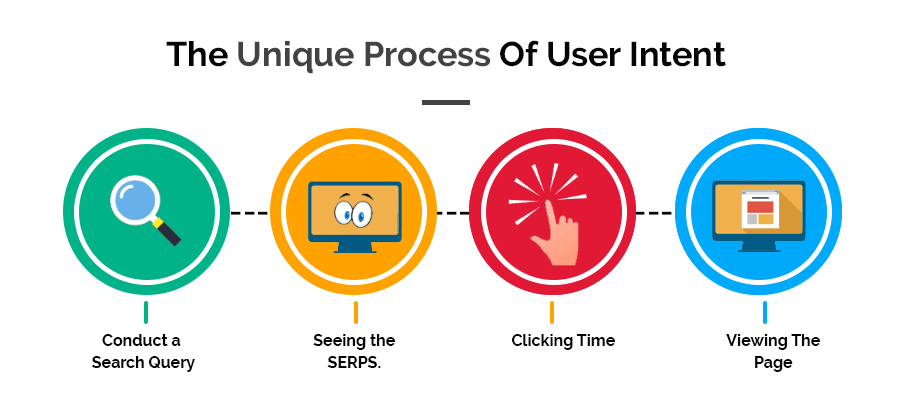
The process of user intent is divided into four steps:
Conduct a Search Query: The user intent process starts when the user types a query on the search engine.
A search query can be navigational, informational, or transactional, but when they start with the search, there is an image in the mind of the user like what type of results they want to see or what type of page they want to see when through the search.
Seeing the SERPS: After conducting the search, the user wants to see the expected results for what they are looking for when they conduct a search.
Clicking Time: After seeing the SERP, the user has an intent when they click on any of the displayed results, after reading the title and description of the SERP.
If the title and description of the SERP result are in line with the intent of the user then the user will definitely click on that link.
Viewing The Page: After clicking on the SERP result the user has the Intent to see the expected page they want to see.
How to Create The User Intent SEO Strategy
Now, you know that behind every search there is an intention. Now that we understand the user’s intention, let’s hire professional SEO services to achieve the desired results.
You Need To Write Content Keeping User Intent In Mind

So you know how to write content but have no idea how to write content based on User Intent. Now what?
There is much SEO that only focuses on keywords. They research keywords and write content according to the keywords. It is not the ideal way.
It’s true that choosing the right keyword is the most important thing but it’s not the only thing. You need to consider the user intent when you are writing the content.
Confused?
Let me guide you with an example.
Assume that a user is looking to “Buy designer jackets” and you have written on the topic “how to buy designer jackets” keeping the keyword “Buy designer jackets” in mind, and fortunately, you are ranking on Top for this keyword.
So, what do you think, the user who performed this search query and viewed your blog with the intention to read something about designer jackets or they were just looking to buy designer jackets?
Well, they most probably had the intention to buy designer jackets. This is how we make mistakes while writing the content.
What we instead should do is focus on user intent first and then focus on keyword research.
How to create The User Intent CRO Strategy
The concept of CRO is similar to that of SEO.
For Example: Let’s assume that you are looking to buy photo editor software but are still confused even after collecting all the information about the product. Now you’ll be looking to buy the editor software free trial.
What will you search for?
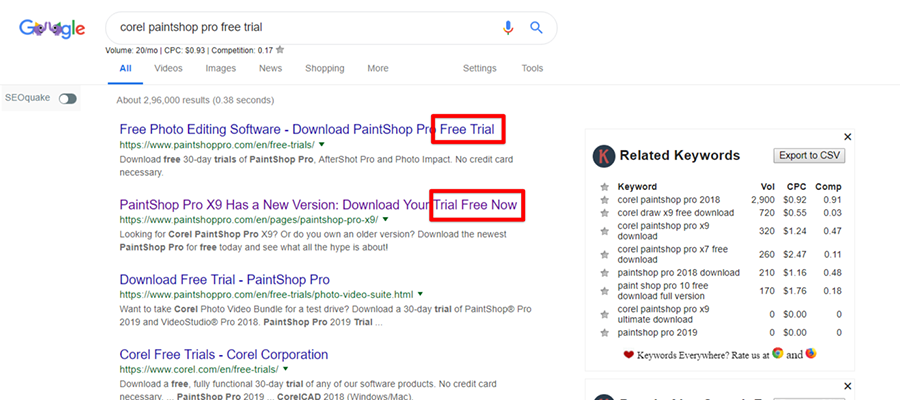
You will search for something like this: “Corel paint shop pro free trial”
Then, you will open the first link from the search results and you’ll probably find the link to download the free trial. This satisfies your intent to download that software.
This is how you can create the user intent CRO strategy.
How does Google handle user intent?
Google handles user intent by showing the most relevant results for what the user is actually looking for.
Rankbrain plays the most important role in showing the most relevant results to the user.
Rankbrain set search queries in a way that suits the best results according to the asked query.
If you want to know all about rankbrain and how it works then you should read this blog.
If you want to understand the user intent very deeply then you need to read the Google search quality Rating Guidelines. The topic of user intent started from the 12.7-page number.
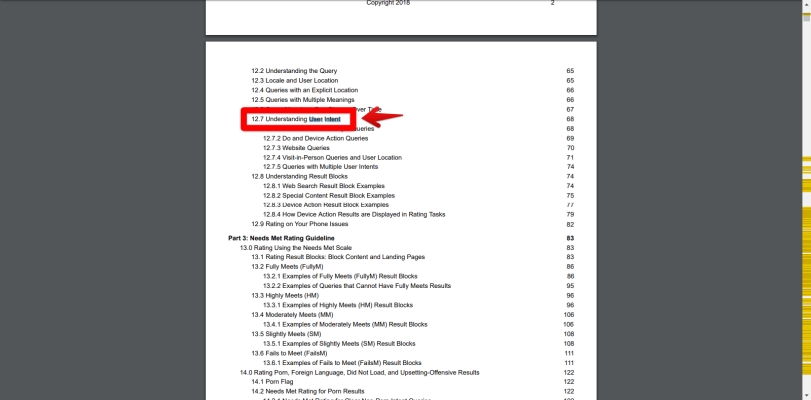
Mainly, Google handles user intent by focusing on query meanings. There are many queries that have multiple and different meanings which I’ve discussed below.
Queries with Multiple and Different Meanings

Sometimes Google is also confused to show the best results to the users.
How?
Because there are many queries that have different & multiple meanings. Many users who have less time to know the information from Google, they always search only 1-word queries. So sometimes Google is also unable to understand the query.
Let’s take an example:
Suppose you want to know some information about the “Fruit apple”.
What you will search for?
Simply will search “apple” in the search engine. I searched apple in Google and I found these results:
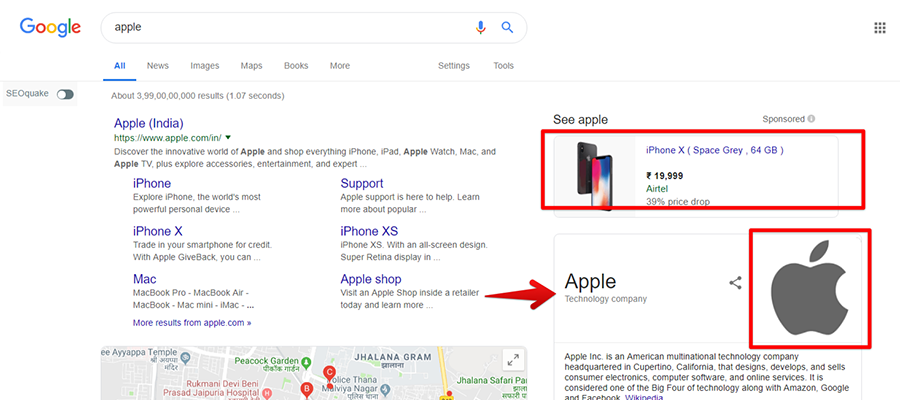
All results were of The most popular branded technology company “Apple” which includes the images of the Apple iPhones.
At this time, Google doesn’t understand your intent because there are billions of searches for Apple iPhones.
After showing these results, I will simply search “Apple fruit” to get the desired results.
I think the topic “queries with multiple meanings” is a little interesting.
So, let’s take another example:
Assume I want the information on Saturn (which is a car brand). So I searched Saturn on Google and I found these results:
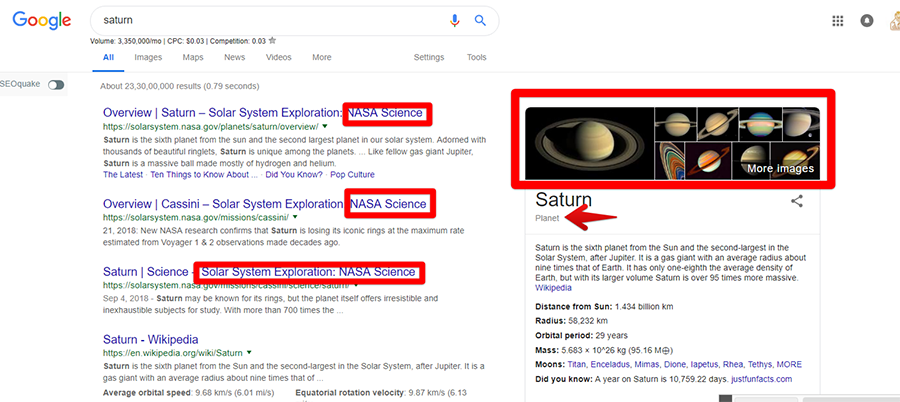
All results were of Saturn which is a planet in the solar system because there are billions of searches for the planet Saturn.
At this time, Google is unable to understand the intent of the user and according to Google, most users who conduct this search query have the intention to know information about the planet Saturn.
So, Google will always show these results when you search for Saturn.
This type of query (which have multiple meanings) is also known as Polysemous Words.
There are types of people who can face challenges when searching or handling these types of queries:
Search Engines: Search engines will try to identify the user intent behind that particular search query.
Searchers/Users: Searchers will see the irrelevant results for what they are actually looking for.
Site Owners/Admin: Site owners will also find their pages in SERPs according to the particular queries.
Advertisers/Paid Marketers: Advertisers will check their ads where they bid on certain words and phrases which have multiple meanings. The searchers will have no interest in those ads.
Let’s Take A Walk in The User’s Shoes

If you are still confused about how to make one of the best strategies for user intent then this method is named “Take a walk in the user’s shoes”.
JuliaEMcCoy says that “To improve the way your content caters to the user intent, walk in your reader’s shoes”
There are two ways to use this method:
The first is you need to ask these questions to the readers of your website: Is content engaging and user-friendly. Does it do what I need to do?
The second is you need to proofread your content by expert content writers who know how to write user-intent-friendly content.
Do You Know That Intent Can Change The Relevancy and Results in Both?
There are many people who spend their time trying to make content with the motive of generating money and forget the most important fact that intent can change the relevancy and results from both.
How?
Here’s how it is…
When you search for something on Google then Google displays the results. The fact is the results can also change in seconds.
Let’s take an example that is beautifully explained by the search engine journal’:
An attack named Dyn DDoS attack happened in October 2016. At that time there was an increasing demand for the results of search terms like (DDOS), (DNS) DDOS attack, DNS attack 2016, and DDS cyber attacks.
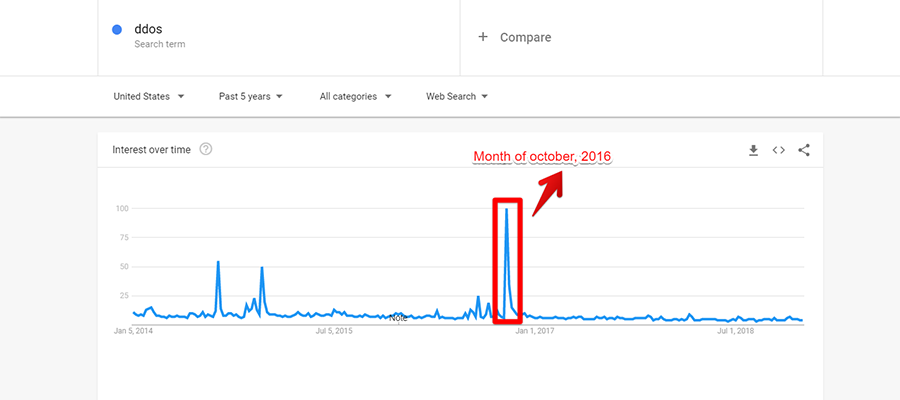
Before the attack, When any user searched for search terms like DDoS and DNS, they got the results of the companies like Cloudflare, secure, and Incapsula.
Those results were technical and related to some companies. After October 2016, now all results changed.
There is another conversion of the transactional query to the informational query. All transactional queries before the attack became informational queries.
Within 12 hours of the attack, all search results were changed into news and blog results which were explaining the attack.
Hence it is also proved that the queries which are transactional can be informational queries according to the different situations. You can also take an example of the election and politics.
What moral we learned from this situation?
We learned that it is not always important to optimize keywords in the content that helps in ranking and traffic.
We need to focus on the user relevancy content and valuable content that generates sense.
Word Counts Don’t Matter in the User Intent Strategy

Now it’s time for contrary to popular belief of people, Content is king, and it is the most important factor to gain valuable and relevant traffic.
Ok, I know what you are thinking now.
“But the size of the content is the most important factor”
A big wrong!
According to the latest SEO techniques in 2023, the main factors now are the “User intent” and most important “user experience”.
If the content is fulfilled with these factors then the content would surely be awesome.
It is a fact that if you want to rank on a particular keyword that has high volume and you write only 100-200 words of content on it that satisfies user intent then you can rank on it.
Let’s take an example:
I searched the word “planning” on Google and I found these results:
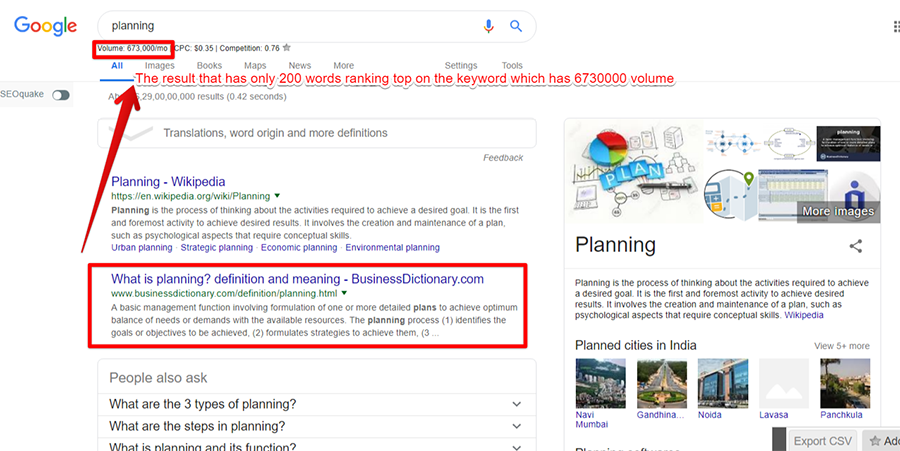
The no.2 position SERP has only 200 words of content written on the page and still ranking on the keyword which has 6730000 volume and high competition.
How?
Because this blog satisfies the intent of the user by providing informative knowledge on the topic of “planning”.
Google’s EAT Guidelines and User Intent
EAT stands for Expertise, Trustworthiness, and Authoritativeness, which is, according to Google, one of the first things it considers while rating the quality of content.
Through its EAT update, Google has released some guidelines on how it assesses the quality of content based on the authoritativeness, expertise, and trustworthiness of the writer.
What does it have to do with User Intent?
Of course, the primary purpose of the ‘User Intent’ phenomenon was to ensure that the content matches the user intent.
Now, to be able to understand the intent of the user of a page or the actual purpose of that page, the content writer must have experience and expertise in that particular industry.
In other words, only an authority writer with good knowledge of the subject can get into the heads of the users, understand their intent and provide the best content to help the user achieve his/her intent.
SAG IPL is Making User Intent Content & Strategy For You
Now you know everything about the user intent. Will you apply these strategies in your work?
If yes then It would be great for you.
If not because you have no time to do this important job.
If you have no time to do this job personally, then I suggest you hire the best SEO companies that follow the latest marketing trends and practices to achieve the desired results for you.
I would like to suggest SAG IPL do this job for you.
Why?
Because they have amazing SEO marketing experts who follow the latest marketing trends and practices to provide you with the best result you wished for.
These all are specialized in creating the user intent and marketing strategy for you that works.
Conclusion:
So this is the complete step-by-step guide to the user intent.
Learning and reading this blog is not enough.
You need to practice on it
Why?
Because practice makes you perfect in every job you want to do the best.
To crack the user intent easily, you need patience, research, and practice and you’ll definitely see the magic.
Believe That!
Any Questions?

If you have any queries or confusion regarding some topics then please let me know by doing a comment.
Gif Source: giphy




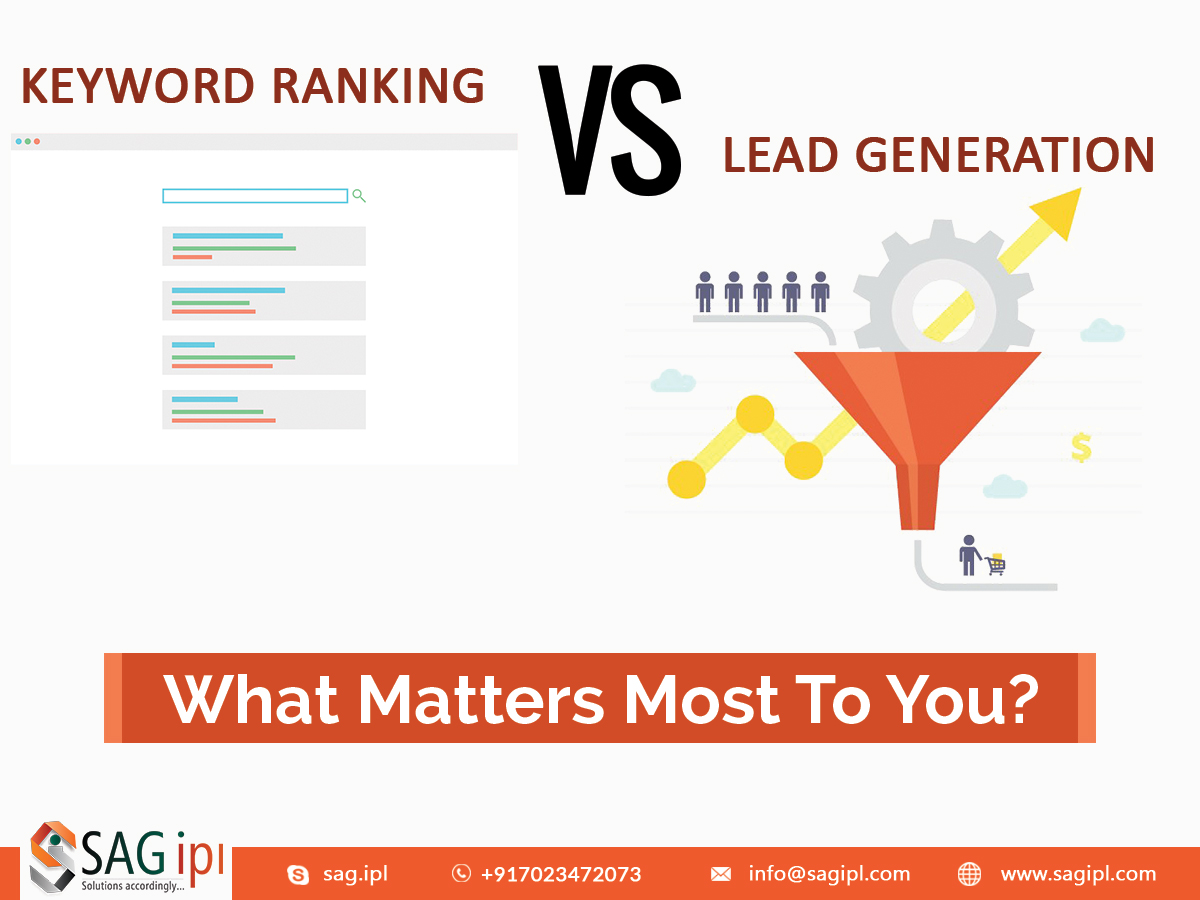


![Mobile SEO Vs Desktop SEO: Why Mobile SEO is Crucial [2024] Mobile SEO Vs Desktop SEO](https://blog.sagipl.com/wp-content/uploads/2023/06/Mobile-SEO-Vs-Desktop-SEO-250x150.jpg)



